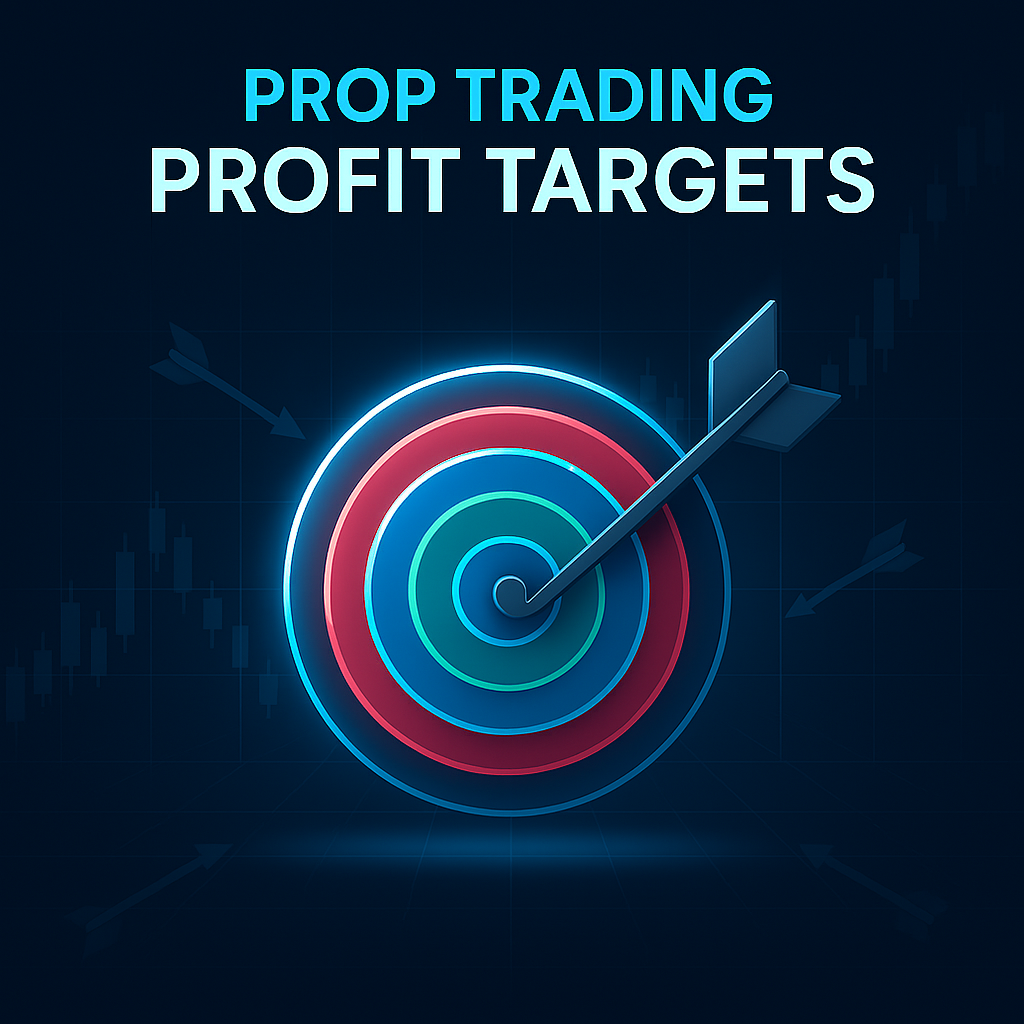How to Hit Profit Targets in Funded Accounts
Achieving prop trading profit targets is one of the most critical skills for any trader working with a funded account. Whether you’re just starting your evaluation phase or managing an already funded account, consistently hitting your goals is essential for growth, withdrawals, and scaling opportunities. But how exactly can traders reach these targets without overtrading or breaching risk rules?
In this guide, we’ll break down the mindset, strategy, and execution techniques you need to hit your profit targets efficiently while staying compliant with firm guidelines—especially when trading with a platform like Larsa Capital.
Why Prop Trading Profit Targets Matter
In a prop trading model, profit targets are set to ensure the trader is capable of generating consistent returns without taking excessive risks. These targets typically come with associated risk management rules such as daily drawdown limits and maximum loss caps.
Failing to hit the target could delay payouts, hinder progression to a higher capital level, or even cause the account to reset. On the other hand, traders who reach their targets within the rules demonstrate professional-level consistency and unlock access to long-term funding and performance bonuses.
Key Strategies to Reach Your Profit Target
1. Start with a Measured Risk Plan
One of the most overlooked elements in funded trading is position sizing. A solid risk management framework should define how much capital you’re willing to risk per trade. Many experienced traders recommend risking no more than 0.5% to 1% per trade. This gives you room to recover from losing streaks while keeping you in the game long enough to reach the profit goal.
Moreover, trade selection becomes more disciplined when risk is limited. Rather than entering marginal setups, traders focus on high-probability trades that justify the risk.
2. Trade Less, But Trade Better
Contrary to popular belief, hitting your prop trading profit targets doesn’t mean you need to trade all day. In fact, overtrading often leads to burnout, revenge trading, and rule violations.
A focused approach—executing 1 to 3 quality setups per day—is often more effective. Build your trade plan around a few key strategies you trust and know inside out. For example, some traders find success with breakout strategies during the New York session, while others may favor reversal setups in lower-volume hours.
Use a Scalable Strategy
To maintain steady growth, your strategy should be both repeatable and scalable. This means:
-
Clear entry/exit rules
-
Defined stop-loss and take-profit levels
-
A setup that performs across multiple market conditions
Scalability also implies that the strategy should work when your account size increases. If you’re adjusting trade size or execution style dramatically as your account grows, the strategy may not be truly scalable.
Leverage Psychology to Stay Consistent
Trading isn’t just about charts—it’s also about emotions. A trader’s mindset can make or break their ability to reach a profit goal. One common pitfall is “target chasing,” where traders force trades simply to reach their daily or weekly number. This often results in losses that set you back even further.
To avoid this, focus on the process rather than the outcome. Stick to your rules, review your performance regularly, and avoid comparing yourself to others.
Managing Drawdowns and Staying on Track
Every trader will experience drawdowns. What matters is how you respond to them. Here are a few effective methods to stay on course:
-
Pause trading after hitting a daily loss limit.
-
Review your last 5 trades during a losing streak. Look for any emotional decisions or rule-breaking.
-
Trade smaller until you regain confidence.
Staying in control during losses preserves both capital and mindset—two essential resources for any funded trader.
Tools That Can Help You Hit Your Profit Target
Successful traders use tools to track performance, log trades, and refine strategy. Here are some practical ones to consider:
-
Trade Journals: Digital or spreadsheet-based journals help identify what’s working and what’s not.
-
Risk Calculators: Automate your lot sizing to match account size and risk profile.
-
Performance Dashboards: Many platforms, including Larsa Capital, offer dashboards that help you track drawdowns, win rate, and more.
Using the right tools brings structure to your trading and minimizes emotional decisions.
Common Mistakes That Keep Traders From Reaching Targets
Even skilled traders can miss profit targets if they make avoidable mistakes. These include:
-
Ignoring risk rules and getting disqualified
-
Trading during news events without a solid plan
-
Increasing trade size after a win or loss (“emotional sizing”)
-
Not adjusting strategy to suit market conditions
-
Lack of patience—trying to hit a month’s target in one day
Being aware of these pitfalls—and developing habits to avoid them—can make a significant difference in your trading outcomes.
Final Thoughts: Patience Over Pressure
Ultimately, hitting prop trading profit targets comes down to process over performance. When you shift your focus from “making money fast” to “trading correctly every time,” the profits often follow naturally. In a funded account, it’s not just about one winning week—it’s about showing consistency, reliability, and control.
Larsa Capital and similar platforms reward traders who trade like professionals. Use that structure to your advantage. Plan your trades, manage risk carefully, and focus on improving every day. Profit targets are not just benchmarks—they’re opportunities to prove your discipline and unlock your potential.

